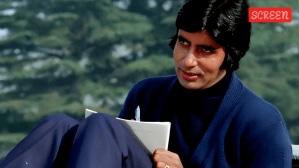The advert featured a 1987 speech by former US President Ronald Reagan in which he can be seen warning people about the perils of tariffs and protectionist policies on economic growth.

Reagan’s words, however, were seemingly taken out of context. The original speech was delivered against the backdrop of his decision to impose tariffs on Japanese semiconductors for unfair trade practices — similar to the argument that the US appears to be using against China today.
Story continues below this ad
Reagan, one of the most influential Republicans and US Presidents of all time, is still widely popular among the party’s base. The White House claimed that the campaign was meant to influence the US Supreme Court which will in November deliver an important judgement deciding whether US President Donald Trump exceeded his powers by imposing reciprocal tariffs on countries around the world.
Ontario Premier Doug Ford subsequently said that he will pause the campaign, arguing that the intention of the advert was “to initiate a conversation about the kind of economy that Americans want to build” and the impact of tariffs, BBC reported. “We’ve achieved our goal, having reached US audiences at the highest levels,” he said.
Erratic US trade policy & SC case
The Trump administration’s erratic moves on trade have begun to hurt Indian exports. While India’s overall exports did not decline in September, shipments to the US dipped 12% due to the 50% duty on Indian items. Continued tariffs could impact India’s labour-intensive sectors such as leather, textiles, and marine products. Moreover, American sanctions on Russian oil could also put pressure on India’s oil import bills.
Washington’s outsized reaction to the Canadian ad campaign also signals growing unease in the Trump administration over the Supreme Court hearing next month, which could strip Trump of his powers to impose reciprocal tariffs and perhaps go as far as to compel the administration to repay the tariffs to US importers.
Story continues below this ad
An adverse court order could also dramatically alter the dynamics of the US-India trade negotiations, as India is largely engaging in reciprocal tariffs rather than Section 232 tariffs. Moreover, experts have raised doubts about the longevity of trade deals that do not comply with WTO norms.
Put simply, Section 232 tariffs aim to protect US national security. Unlike reciprocal tariffs which vary from country to country, Section 232 tariffs, in theory, apply to all countries equally but vary sectorally. The Trump’s administration has used this tool to raise levies on aluminum, cars and car parts, copper, furniture, lumber, steel, and timber.
The increased use of Section 232 by the US could mean that any concessions offered by India to the US under the trade deal may apply only to the current 50% reciprocal tariffs on India, leaving sectoral tariffs that the US is imposing — and planning to impose — unaffected. However, a government official said that New Delhi is focused on reciprocal tariffs, as Section 232 applies to all countries and does not affect competitiveness in the same way as reciprocal tariffs.
A concession on Section 232 may be unlikely, as the US has only offered concessions to the UK by levying 25% tariffs on the UK’s steel and aluminium — compared with 50% on other countries — under the US–UK Economic Prosperity Deal. Under the deal, the UK agreed to import American agricultural products, a priority for the Trump administration. London has also secured lower tariffs on limited quantities of car exports to the US.
Story continues below this ad
‘Any deal with Trump not worth the paper it’s written on’
Nobel Prize-winning economist Joseph Stiglitz, in a TV interview, said that “any deal with Trump was not worth the paper it was written on”, as the EU got a bad deal despite its size in world trade.
“If we were just about trade, you look at the size of the European economy, the size of the American economy, how much Europe trades, how much the US trades. Europe should be paid to trade with the United States rather than the other way around. Europe should have got a better deal. Europe got a bad deal. But they [the EU] should remember any deal with Trump is not worth the paper that it’s written on. And I don’t know if you’ve seen, not long after that deal — it wasn’t signed but agreed on — the US said, you [the EU] have to get rid of all your digital regulations. So where does that place you?” Stiglitz said.
Jean-Pierre Landau, Associate Professor of Economics at Sciences Po, France, in an interview with The Indian Express earlier this month, said that even in Europe, this (US–EU trade) deal is very controversial, as some see it as “an undue abdication into an asymmetric situation for strategic reasons; others see it as the lesser of two evils”.
“The real question is how we come out of this succession of ad hoc deals made with different countries, each subject to different constraints and different political visions about the future. And again, it comes back to uncertainty. In my personal view, more than tariffs themselves, more than the measures, the lack of trust in each other’s behaviour is what will ultimately have the most negative consequences,” Landau said.







































